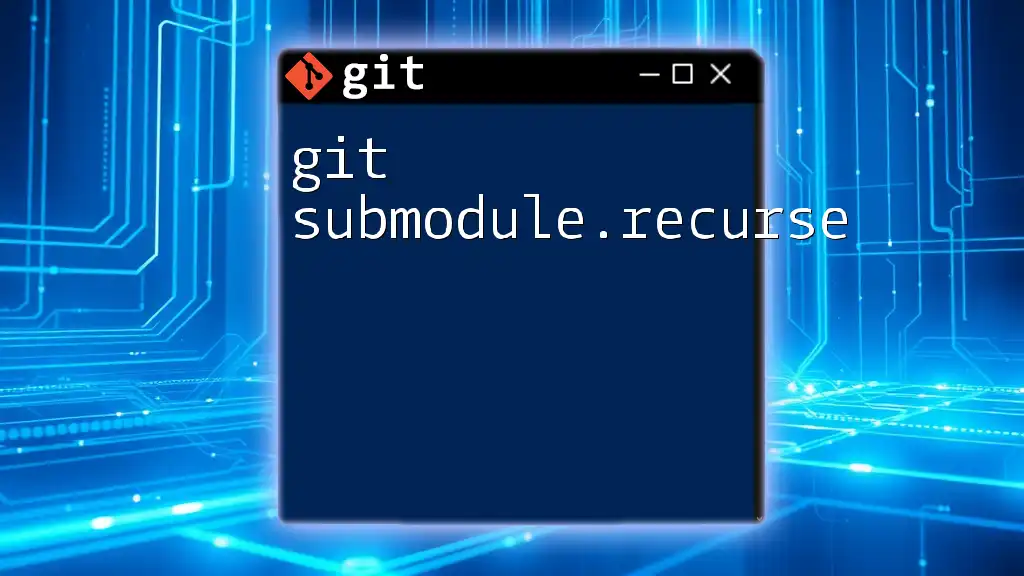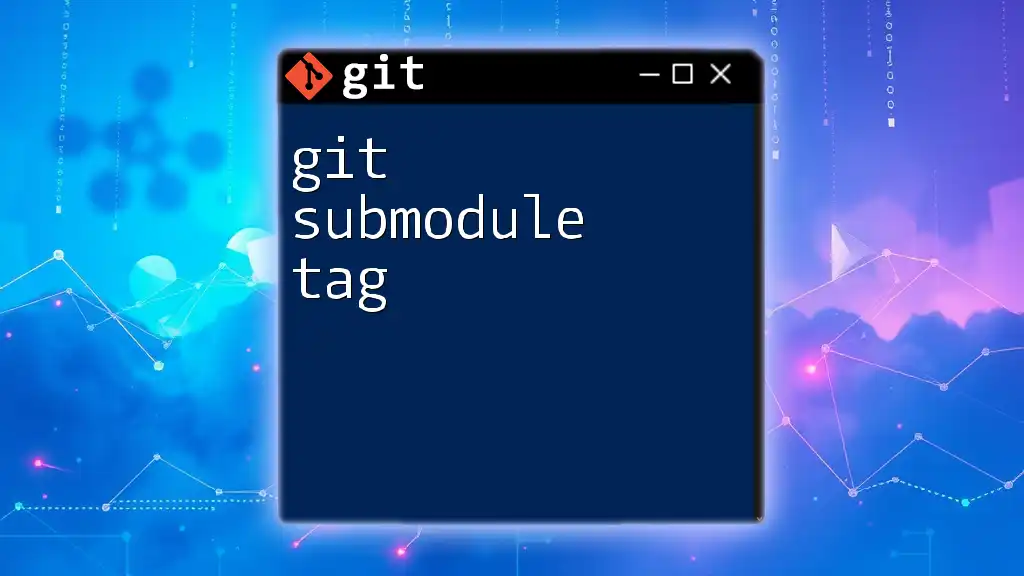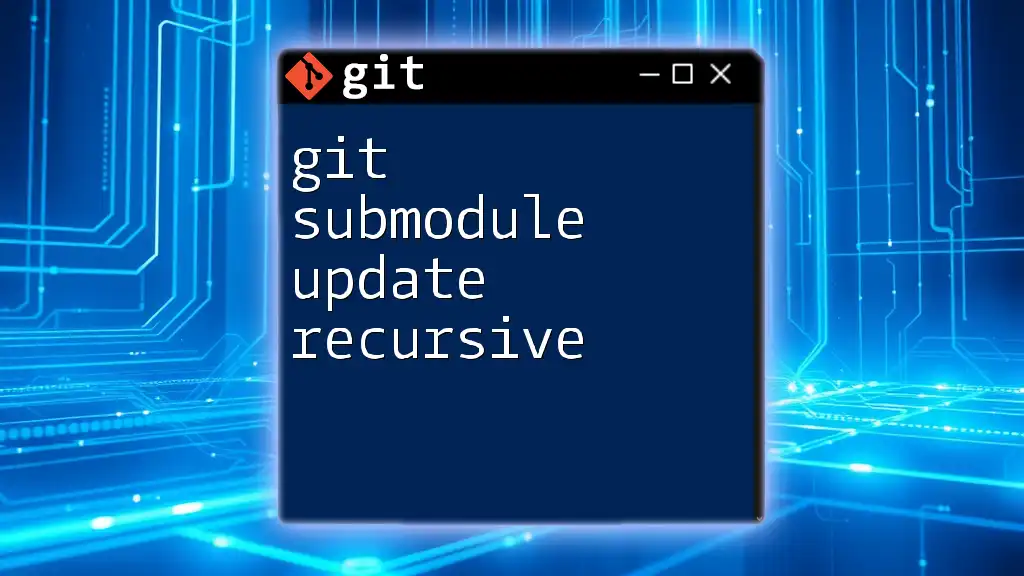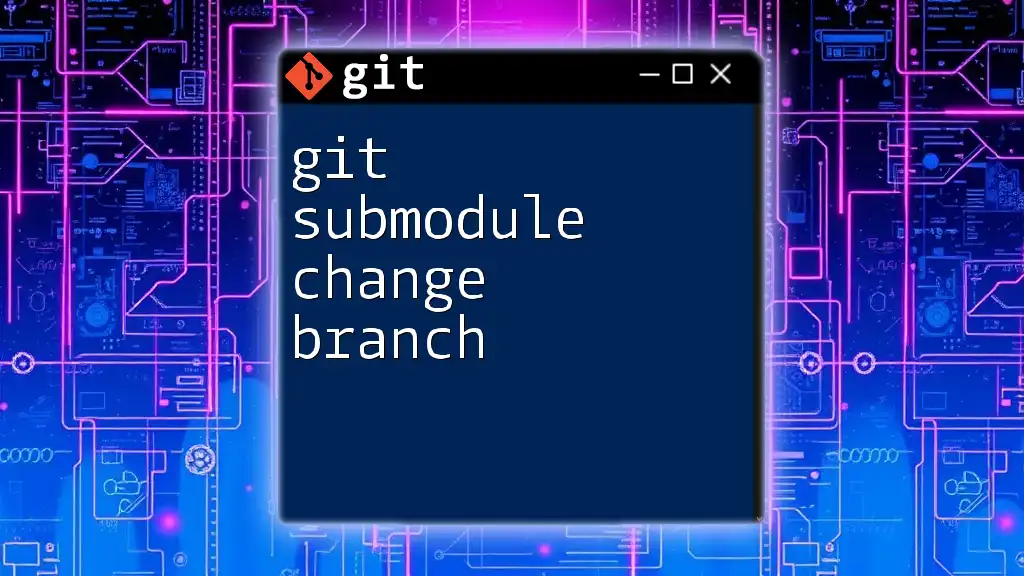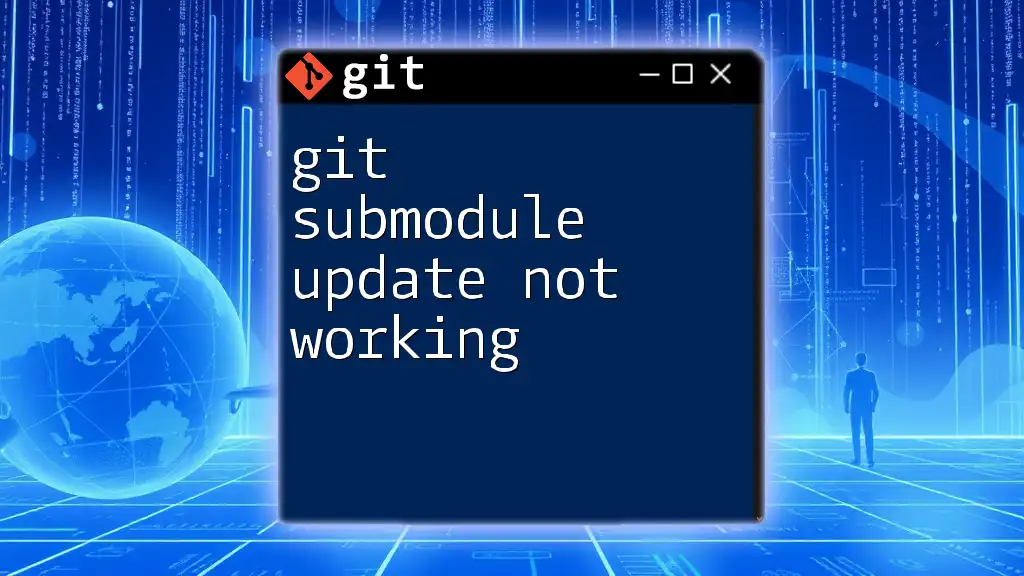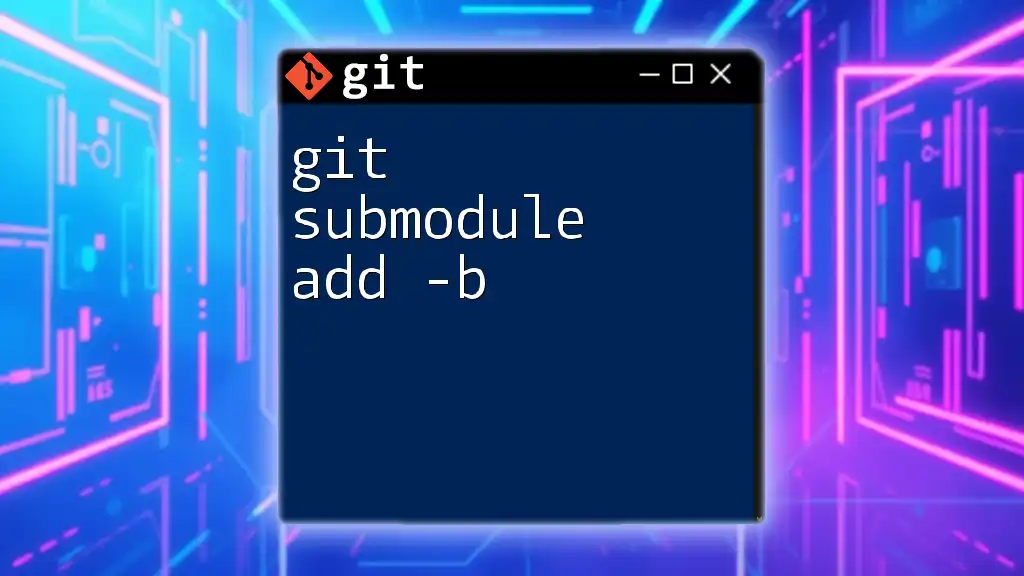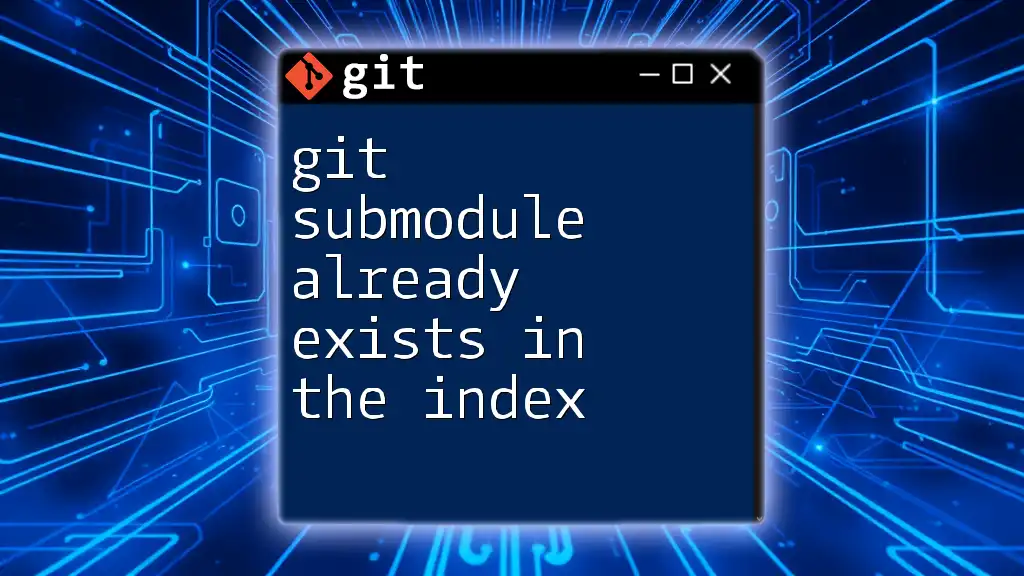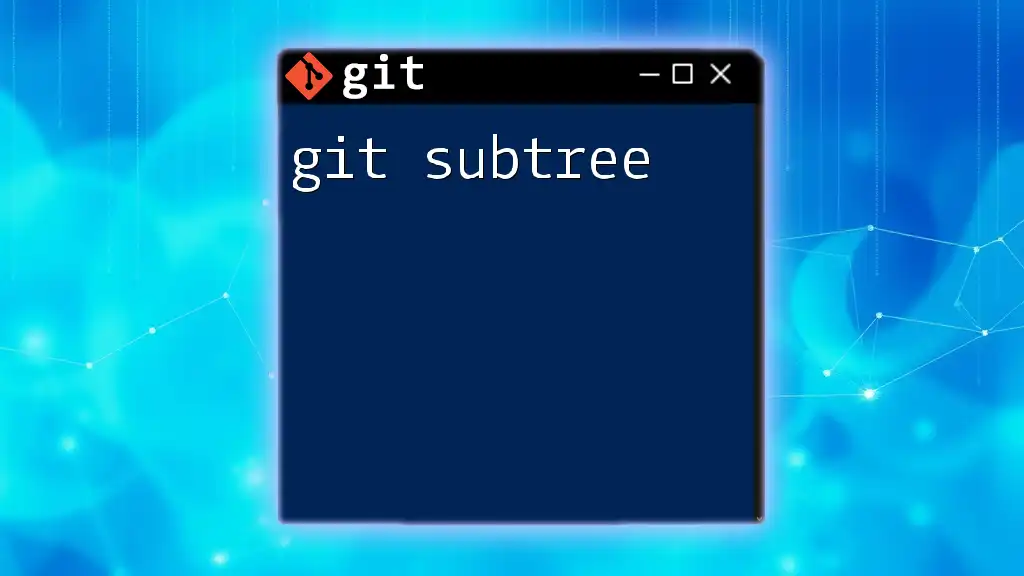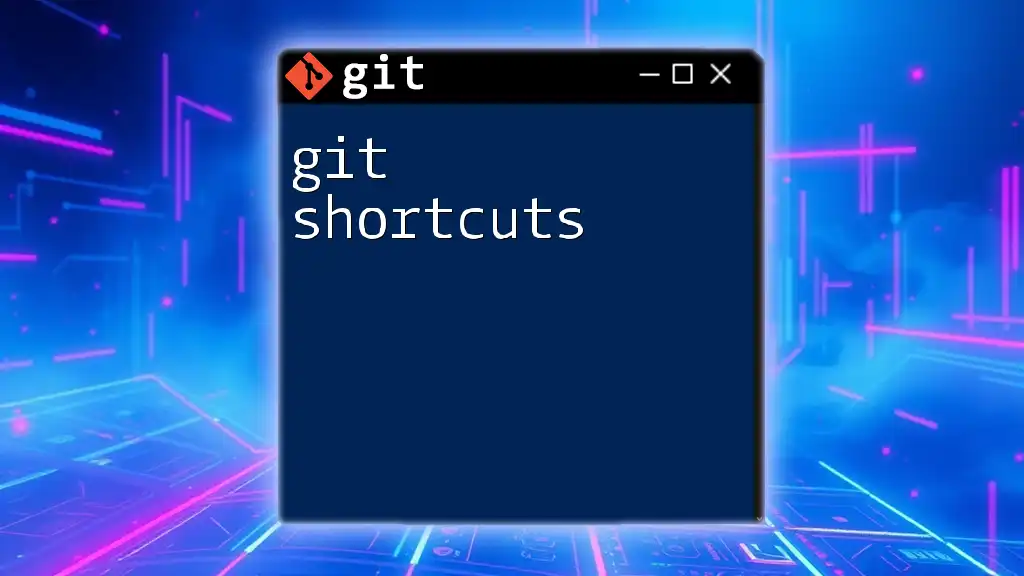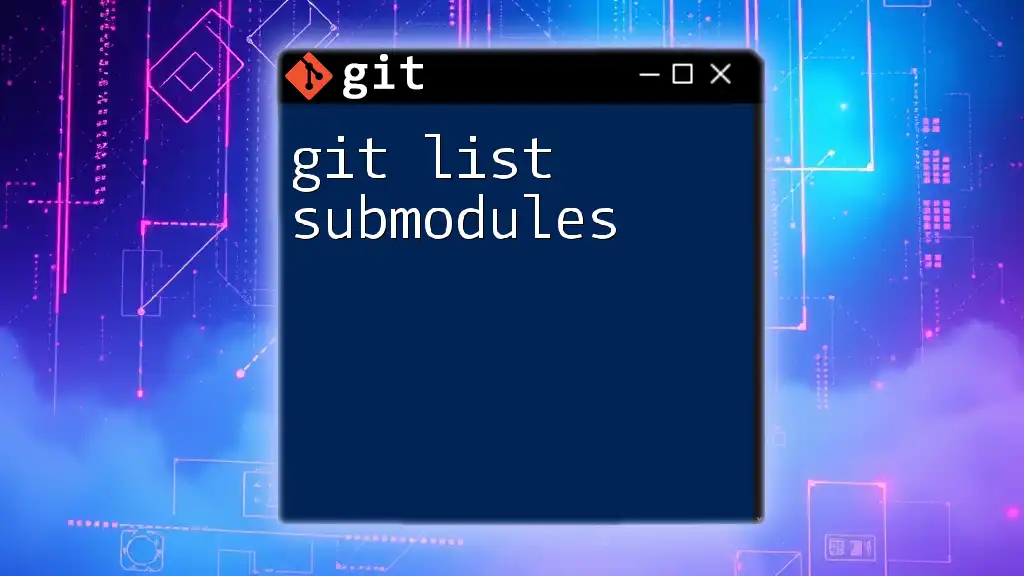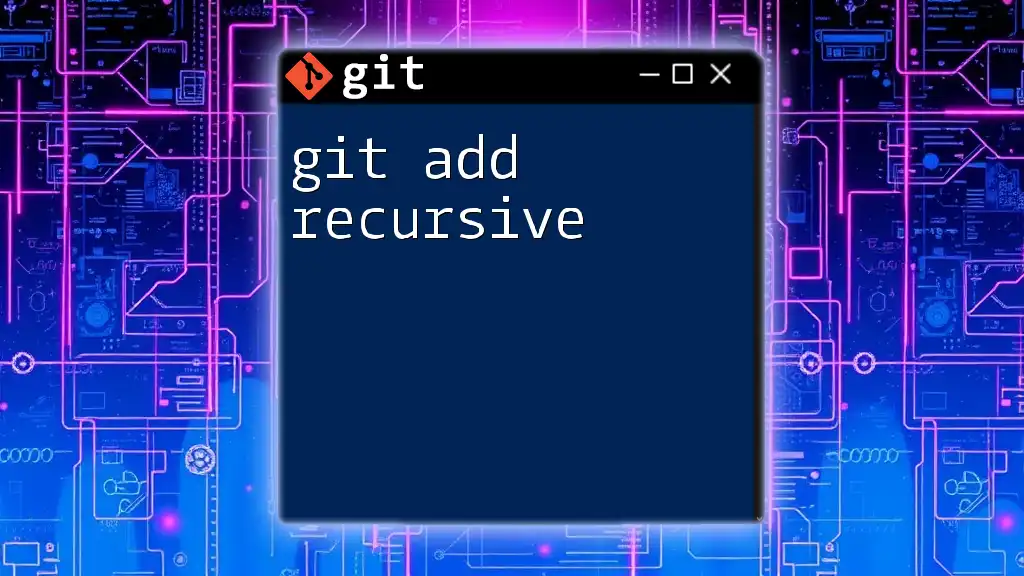The `git submodule.recurse` configuration option allows you to automatically update or initialize submodules when performing operations like `git clone` or `git pull`, ensuring that all dependencies are correctly managed.
Here's a code snippet demonstrating how to enable this option:
git config --global submodule.recurse true
Understanding Git Submodules
What are Git Submodules?
Git submodules are repositories nested inside another Git repository. They enable developers to include and manage external libraries or dependencies with their own version control. This functionality is particularly useful for projects that rely on external codebases, as it allows you to lock a specific state of the dependency rather than just linking to the latest version.
Advantages of using Git submodules:
- Isolation: Each submodule retains its own repository, which helps in managing its lifecycle independently.
- Version Control: You can specify the exact commit you want to reference, allowing for greater stability.
- Organization: Clearly separates parts of your project, which can enhance maintainability.
Drawbacks:
- Complexity: Introducing submodules can complicate the repository structure and workflow.
- Synchronization Challenges: Keeping submodules updated requires additional commands and considerations.
How Git Submodules Work
When you add a submodule to your project, Git creates a reference to a specific commit within the submodule repository. This reference is stored in the parent repository, which means any changes to the submodule won’t automatically be reflected in the parent until you update it.
Unlike regular repositories, submodules do not automatically track the latest changes. Instead, they require manual updates to synchronize with the upstream repository, making it essential to understand how to manage them effectively.
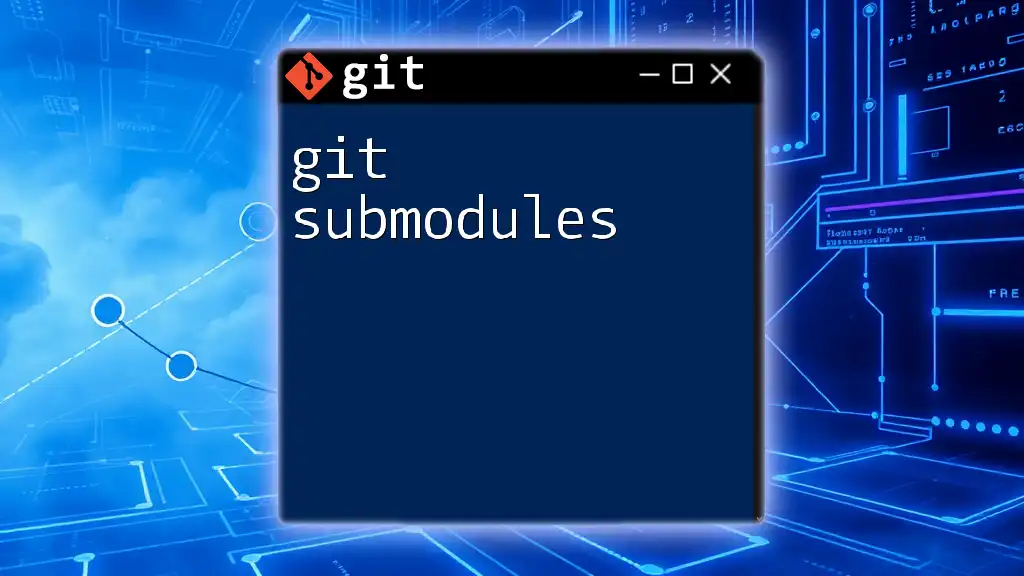
Introduction to `git submodule.recurse`
What is `git submodule.recurse`?
The `git submodule.recurse` option configures Git's behavior when interacting with submodules, particularly in bulk operations such as `clone`, `fetch`, and `pull`. By using `submodule.recurse`, you can control whether these commands should automatically apply to submodules as well.
When to Use `git submodule.recurse`
The `submodule.recurse` feature is beneficial in complex projects where you have multiple layers of submodules. It allows you to operate on the entire repository tree, simplifying the process of updating all submodules with a single command.
For instance, if you're working on a project that includes a main application and several libraries as submodules, using `submodule.recurse` ensures that pulling changes for the main project also updates all nested dependencies simultaneously.
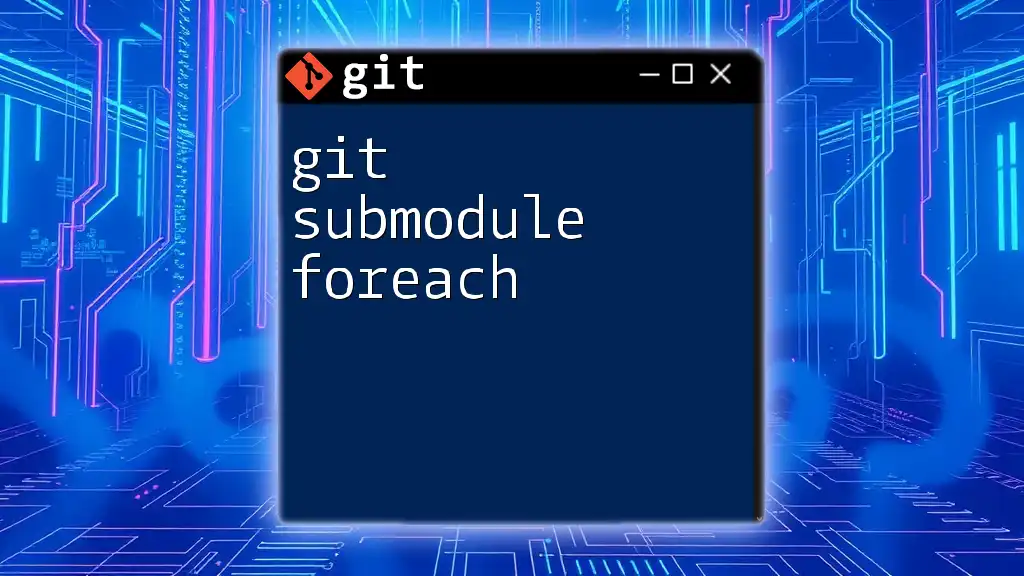
Setting Up `git submodule.recurse`
Initializing and Adding Submodules
To start with submodules, you need to initialize them within your primary repository. Here’s how to do it:
git submodule add <repository-url> <submodule-path>
This command adds the submodule to the specified path.
Explanation:
- `<repository-url>` refers to the Git repository of the submodule.
- `<submodule-path>` is the folder within your main project where the submodule will reside.
Configuring `submodule.recurse`
Configuring `submodule.recurse` involves setting it globally or locally, which determines how Git will handle submodules during your work.
git config --global submodule.recurse true
git config submodule.recurse true
Setting this configuration allows all relevant commands to work across the entire repository, applying the same principles to submodules as you do to your main project. This is ideal for teams working collaboratively and addresses instances where multiple developers are updating their forks.
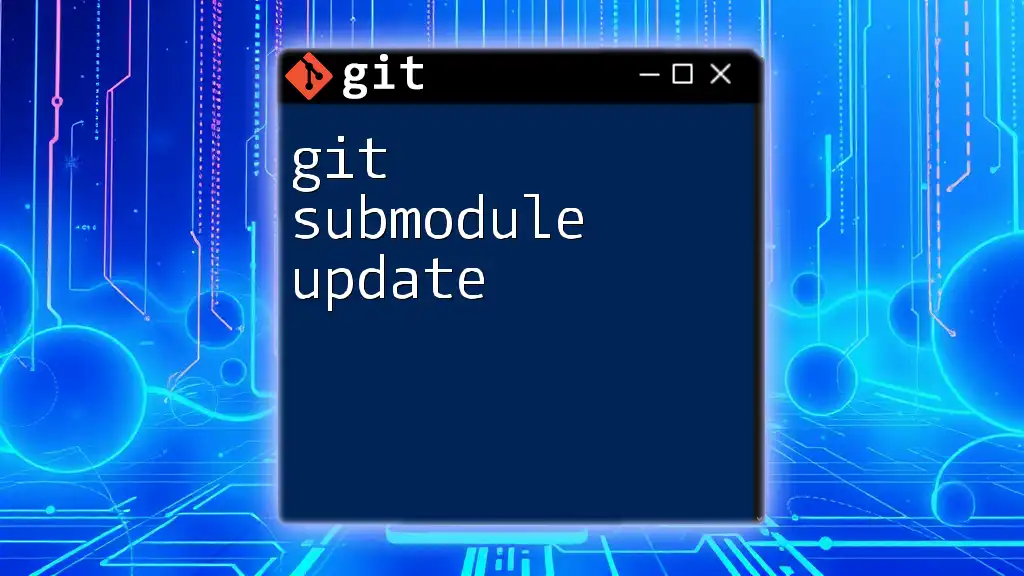
Using `git submodule.recurse`
Cloning Repositories with Submodules
When cloning a repository that contains submodules, you must ensure they are initialized and updated correctly. The recommended way to do this is:
git clone --recurse-submodules <repository-url>
This command not only clones the main repository but also fetches all submodules in one go.
Updating Submodules with `recurse`
To keep your submodules up-to-date along with the main repository, you can use:
git submodule update --recursive --remote
This command recursively updates all submodules, allowing you to pull changes efficiently without needing to navigate into each submodule directory.
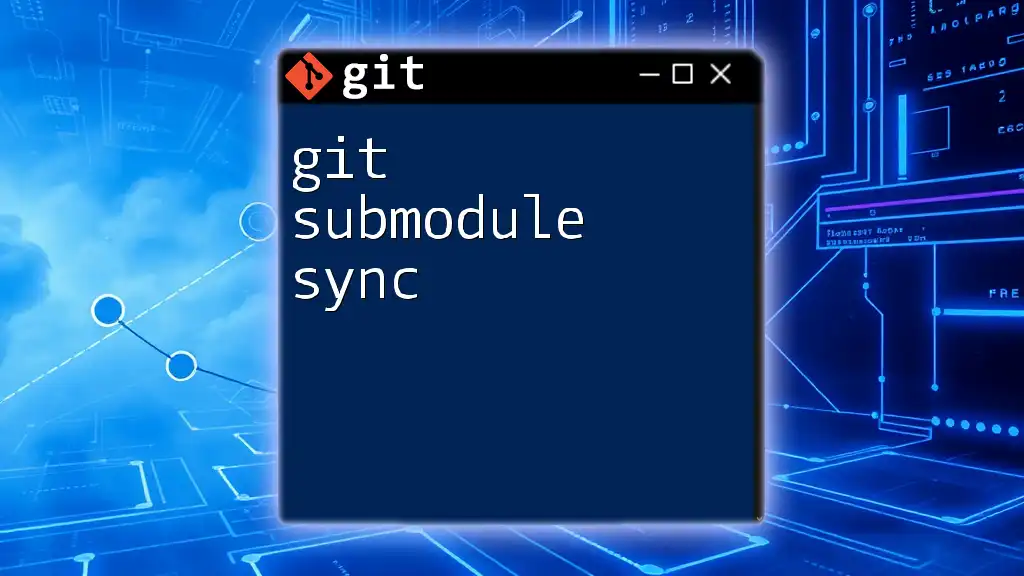
Examples of `git submodule.recurse` in Action
Real-World Scenario: Managing Dependencies
Consider a project that leverages external libraries stored as Git submodules. By utilizing `git submodule.recurse`, you can efficiently maintain your required libraries without needing to micromanage each one separately.
For instance, if your project has a submodule for logging utilities, updating the main repository automatically ensures you also have access to the latest version of this utility by running the recursive update command.
Troubleshooting Common Issues
While working with `submodule.recurse`, you may encounter issues such as mismatched submodule states or detached working trees. A common scenario is when a submodule is at a specific commit that isn't reflected in the parent repository.
To resolve this, ensure that you consistently commit submodule changes in the parent repository. If errors arise, executing:
git submodule sync
can help synchronize your submodule configurations with their URLs.
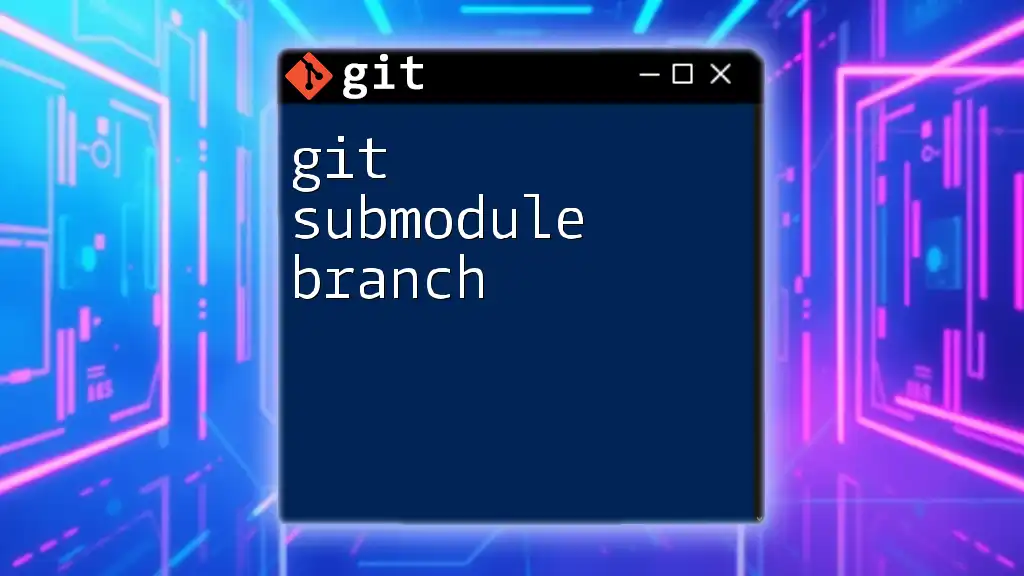
Best Practices for Using Submodules
Recommendations for Project Structure
Maintain a clear directory structure to manage submodules efficiently. Organize submodules logically, grouping similar functionalities together. This not only enhances clarity but also assists other developers (or yourself) when contributing to the project.
Version Control and Submodule Management
Regularly check and commit submodule references to avoid confusion. Use branches effectively; for instance, establish a policy of regularly updating the main project from stable versions of the submodules, rather than relying on the tip of a branch.
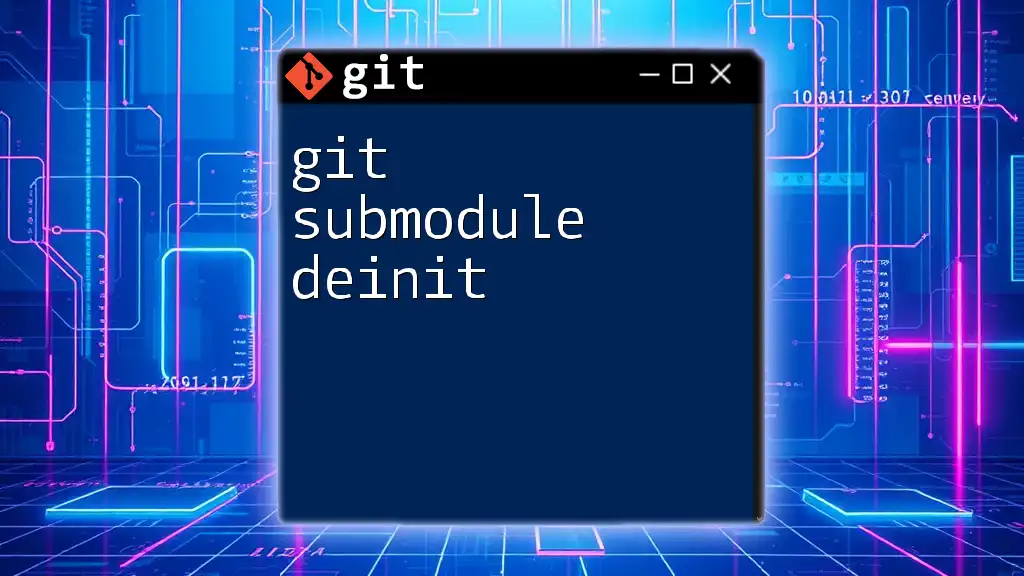
Conclusion
The `git submodule.recurse` option is an essential tool for managing complex projects with multiple dependencies. By understanding and implementing this option, you can significantly streamline your workflow, ensuring that the main repository and its submodules stay in sync with ease.
Embracing this functionality will enhance project organization and stability, particularly in environments where collaboration is key. For further learning, consider exploring the Git documentation, which offers comprehensive insights into best practices and additional features.

